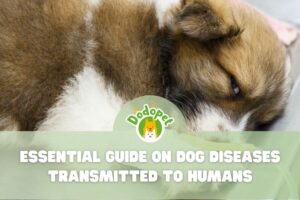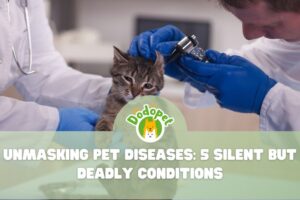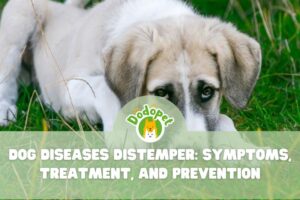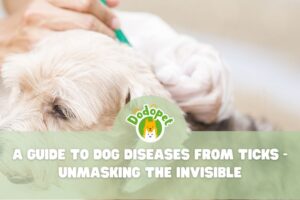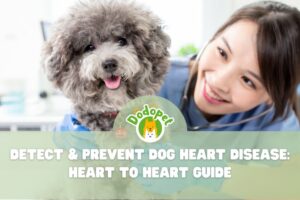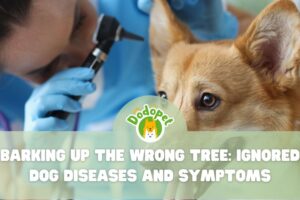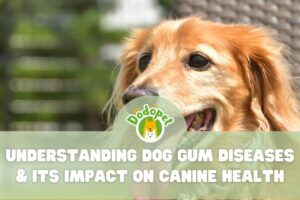Dogs are beloved pets and companions, but they are also susceptible to various diseases. One such disease is parvo, which can be life-threatening if not detected and treated early. Understanding the symptoms of parvo is crucial for dog owners to ensure the well-being of their furry friends. This article will provide an in-depth look at parvo symptoms, how to spot them, and what steps to take if your dog is showing signs of this disease.
Introduction to Dog Diseases Parvo
Parvo, short for canine parvovirus, is a highly contagious viral infection that affects dogs, particularly puppies. It primarily attacks the gastrointestinal system, causing severe vomiting, diarrhea, and dehydration. Parvo can also affect the heart muscles in some cases, leading to more serious complications.
Understanding Canine Parvovirus
Dog Diseases Parvo belongs to the Parvoviridae family and is classified as a non-enveloped, single-stranded DNA virus. It is highly resistant and can survive in the environment for months, making it easily transmissible between dogs. The virus primarily spreads through direct contact with infected feces or contaminated objects. Parvo affects dogs of all breeds and ages, but puppies between six weeks and six months old are most vulnerable. Their immune systems are not fully developed, making them more susceptible to the virus. Unvaccinated dogs or those with weakened immune systems are also at higher risk.
Common Dog Diseases Parvo Symptoms
Recognizing the symptoms of Dog Diseases Parvo is crucial for early detection and treatment. The following are common signs that your dog may have contracted the virus:
- Severe vomiting
- Diarrhea, often bloody
- Lethargy and weakness
- Loss of appetite
- Dehydration
If your dog exhibits any of these symptoms, it is essential to seek veterinary care immediately. Prompt treatment can significantly increase the chances of recovery.
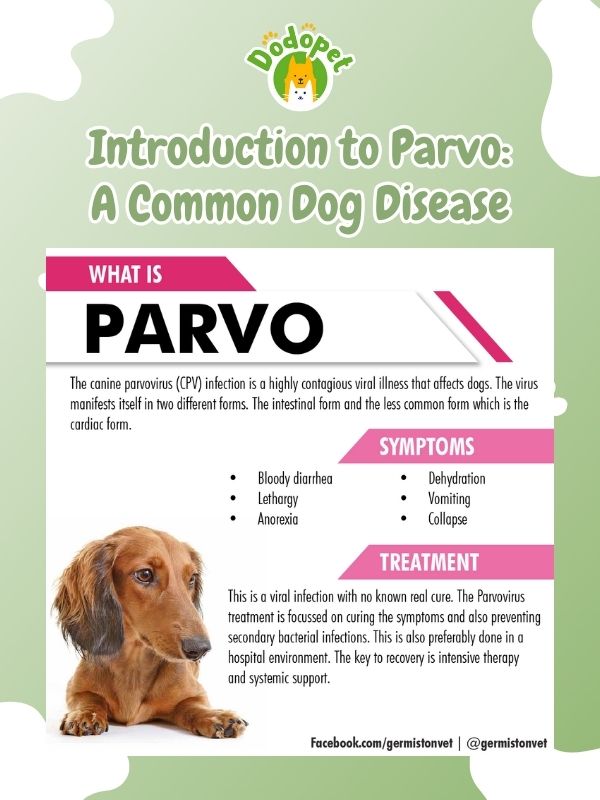
Introduction to Parvo_ A Common Dog Disease
Understanding the Causes of Dog Diseases Parvo
To understanding comprehensively The causes and modes of transmission of Dog Diseases Parvo are as follows:
- Direct Contact with an Infected Dog: The primary mode of transmission is direct contact with an infected dog. The virus is shed in the feces of infected dogs and can remain in the environment for an extended period. Dogs can contract the virus by sniffing, licking, or coming into contact with contaminated fecal matter or contaminated surfaces like food and water bowls, toys, or bedding.
- Indirect Transmission: Parvovirus is highly resilient and can survive in the environment for months to years. Dogs can become infected by indirect contact with contaminated areas, such as dog parks, kennels, pet stores, and veterinary clinics.
- Fecal-Oral Route: Dogs may ingest the virus through the fecal-oral route, meaning they consume contaminated fecal matter from an infected dog or a contaminated surface.
- Infected Objects and Clothing: The virus can also be spread through contaminated objects like shoes, clothing, and hands that have come into contact with infected feces or vomit. People can inadvertently carry the virus from one place to another.
- Inadequate Vaccination: Dogs that are not properly vaccinated against parvovirus are at a higher risk of contracting the disease. Puppies and dogs with incomplete or out-of-date vaccinations are particularly vulnerable.
- Immune System Compromises: Dogs with weakened immune systems due to factors like malnutrition, stress, or concurrent illnesses are more susceptible to parvovirus.
- Age: Parvovirus most commonly affects puppies between six weeks and six months of age. Young puppies, in particular, have not yet developed a strong immune response.
- Breed Susceptibility: Some dog breeds, such as Rottweilers, Doberman Pinschers, and American Staffordshire Terriers, may be more susceptible to parvovirus infection.
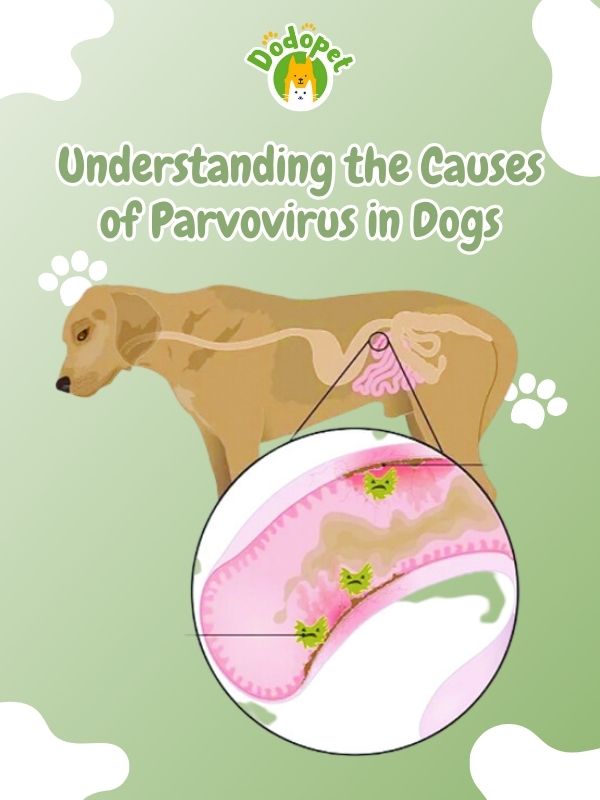
Understanding the Causes of Parvovirus in Dogs
Spotting Dog Diseases Parvo Symptoms
Spotting parvo symptoms early on is crucial for the well-being of your dog. By being vigilant and observant, you can catch the signs of parvo and seek appropriate medical attention promptly. Here are some key steps to help you spot parvo symptoms:
- Monitor Your Dog’s Behavior
Pay close attention to any changes in your dog’s behavior. Look out for signs of lethargy, loss of appetite, and decreased energy levels. Dogs infected with parvo may appear weak and uninterested in their usual activities.
- Observe Vomiting and Diarrhea
Keep an eye on your dog’s bowel movements. Parvo-infected dogs often experience severe vomiting and diarrhea, which may be accompanied by blood. If you notice these symptoms, it is crucial to consult a veterinarian immediately.
- Check for Dehydration
Dehydration is a common consequence of parvo due to excessive vomiting and diarrhea. To check for dehydration, gently pinch the skin on the back of your dog’s neck. If the skin takes longer than usual to return to its original position, it may indicate dehydration.
- Assess Body Temperature
Parvo can cause a drop in body temperature, leading to hypothermia. Use a rectal thermometer to measure your dog’s temperature. A normal temperature for dogs ranges between 100.5°F and 102.5°F. If the temperature falls below this range, it is a cause for concern.
- Look for Signs of Discomfort
Dogs with parvo may exhibit signs of discomfort, such as abdominal pain or bloating. They may also show reluctance to eat or drink due to nausea. If your dog displays these symptoms, it is crucial to seek veterinary care immediately.
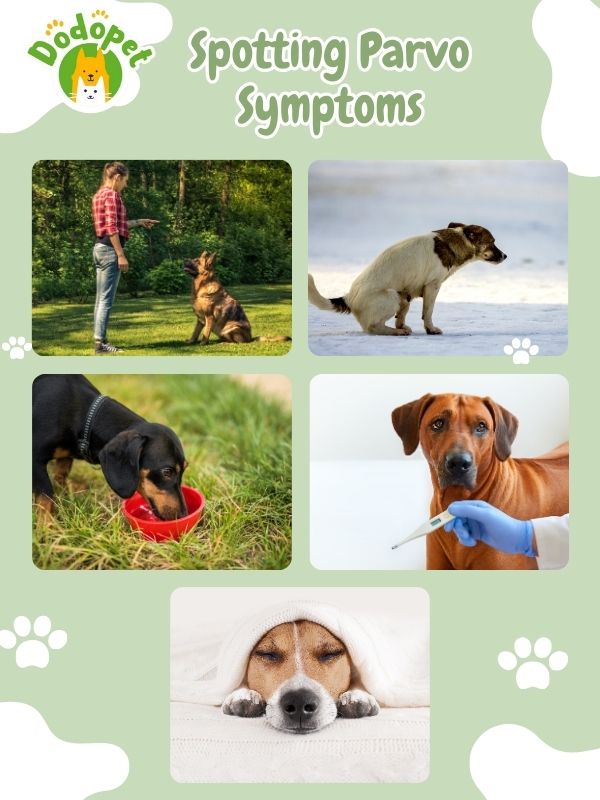
Spotting Parvo Symptoms
The Importance of Early Detection in Parvo Treatment
Early detection is of paramount importance in the treatment of canine parvovirus (CPV) for several critical reasons:
- Increased Survival Rates: The prognosis for dogs with parvovirus greatly improves with early detection and intervention. Prompt treatment can significantly increase the chances of a successful recovery.
- Rapid Disease Progression: Parvovirus can progress rapidly, especially in puppies and young dogs. The virus attacks rapidly dividing cells in the gastrointestinal tract, causing severe diarrhea and vomiting, which can lead to rapid dehydration, electrolyte imbalances, and shock. Detecting the disease early allows for quicker treatment, which can prevent these life-threatening complications.
- Reduced Severity of Symptoms: Early detection and treatment can help mitigate the severity of clinical signs. By addressing the disease at its onset, veterinarians can provide supportive care to manage symptoms such as vomiting and diarrhea, improving the dog’s overall comfort and well-being.
- Minimized Transmission Risk: Parvovirus is highly contagious, and infected dogs shed the virus in their feces. Early detection and isolation of infected dogs can help prevent the virus from spreading to other susceptible dogs in the same household or community.
- Tailored Treatment Plans: Early detection allows veterinarians to create personalized treatment plans based on the dog’s age, weight, and specific clinical signs. This tailored approach increases the effectiveness of treatment and minimizes potential complications.
- Prevention of Secondary Infections: Dogs with parvovirus are more susceptible to secondary bacterial infections due to the weakened immune system. Early treatment with antibiotics can help prevent these secondary infections from taking hold.
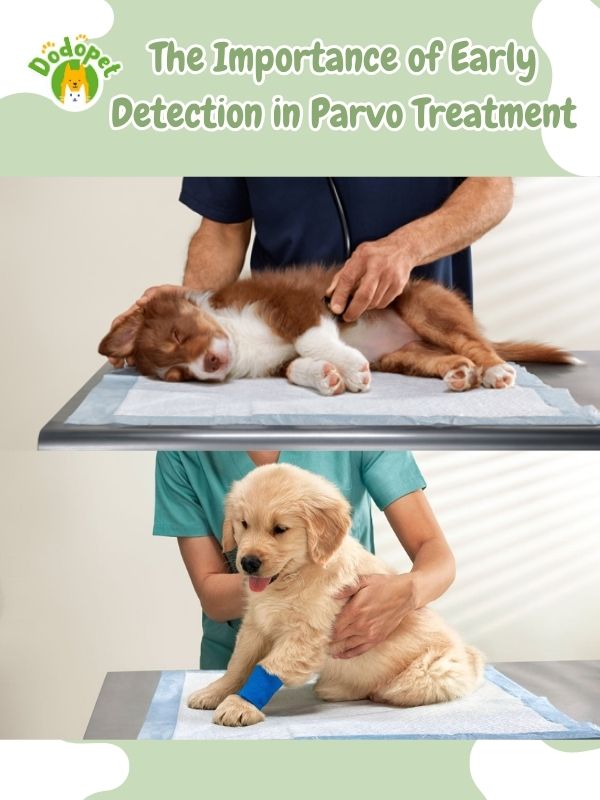
The Importance of Early Detection in Parvo Treatment
Steps to Take Once You Spot the Signs of Dog Diseases Parvo
If you suspect that your dog has contracted parvo, it is essential to take immediate action. Follow these steps to ensure the best possible care for your furry friend:
- Contact Your Veterinarian
As soon as you notice any symptoms of parvo, contact your veterinarian. Explain the situation and follow their guidance on the next steps to take. They may advise you to bring your dog in for an examination or provide instructions for at-home care.
- Isolate Your Dog
Parvo is highly contagious, so it is crucial to isolate your infected dog from other pets to prevent further spread of the virus. Keep them in a separate area of your home and avoid contact with other dogs until they have fully recovered.
- Provide Fluids and Nutrients
Due to severe vomiting and diarrhea, dogs with parvo are at risk of dehydration and malnutrition. Your veterinarian may recommend providing fluids and nutrients to help maintain hydration and nourishment. Follow their instructions carefully and administer any prescribed medications.
- Clean and Disinfect
Parvo can survive in the environment for extended periods, so it is crucial to thoroughly clean and disinfect any areas your dog has come into contact with. Use a bleach solution or a disinfectant specifically designed to kill parvovirus. Wash bedding, toys, and food bowls with hot water and detergent.
- Follow Up with Veterinary Care
After the initial treatment, it is important to follow up with your veterinarian for further evaluation and monitoring. They will assess your dog’s progress and determine if any additional treatments or medications are necessary.

Steps to Take Once You Spot the Signs of Parvo
Preventing Dog Diseases Parvo: Essential Vaccinations and Hygiene Practices
Prevention is always better than cure when it comes to parvo. Taking proactive measures to protect your dog from this potentially deadly virus is essential. Here are some steps you can take to prevent parvo:
- Vaccination
Vaccination is the most effective way to prevent parvo. Ensure that your dog receives the necessary vaccinations as recommended by your veterinarian. Puppies typically receive a series of vaccinations starting at six to eight weeks of age.
- Limit Exposure to Contaminated Areas
Avoid taking your dog to areas where parvo may be present, such as dog parks or places with a high concentration of dogs. The virus can survive in the environment for months, so it is crucial to limit exposure to contaminated areas.
- Practice Good Hygiene
Practice good hygiene by regularly cleaning and disinfecting your dog’s living area, toys, and food bowls. Wash your hands thoroughly after handling other dogs or coming into contact with potentially contaminated surfaces.
- Avoid Contact with Infected Dogs
If you know of any dogs that have been diagnosed with parvo, avoid contact with them to prevent the spread of the virus. Be cautious when introducing your dog to new dogs and ensure that they are healthy and up to date on vaccinations.
- Regular Veterinary Check-ups
Regular veterinary check-ups are essential for maintaining your dog’s overall health and well-being. Your veterinarian can assess your dog’s vaccination status and provide guidance on preventive measures specific to your dog’s needs.
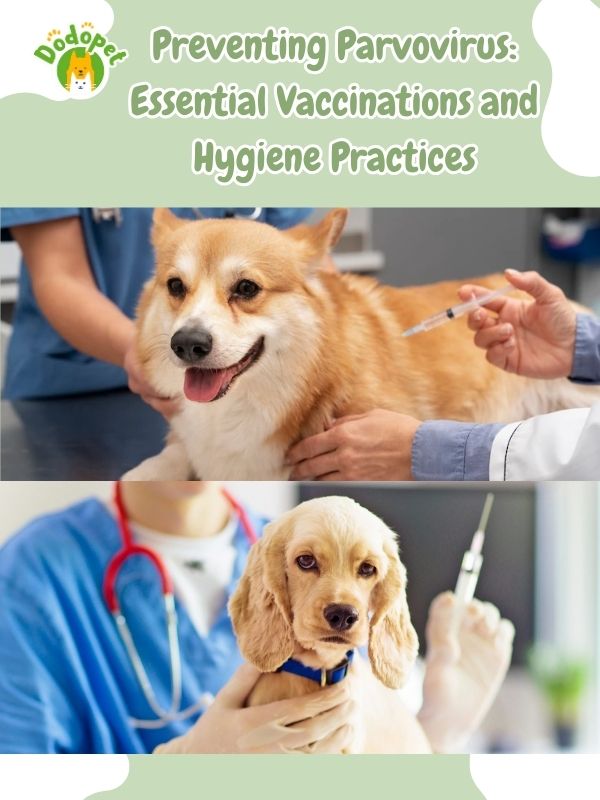
Preventing Parvovirus_ Essential Vaccinations and Hygiene Practices
Conclusion
Dog Diseases Parvo is a serious disease that can have devastating effects on dogs, particularly puppies. Understanding the symptoms of parvo and knowing how to spot them early on is crucial for prompt treatment and a higher chance of recovery. By being vigilant, taking preventive measures, and seeking veterinary care when needed, you can help protect your furry friend from this potentially life-threatening virus.

